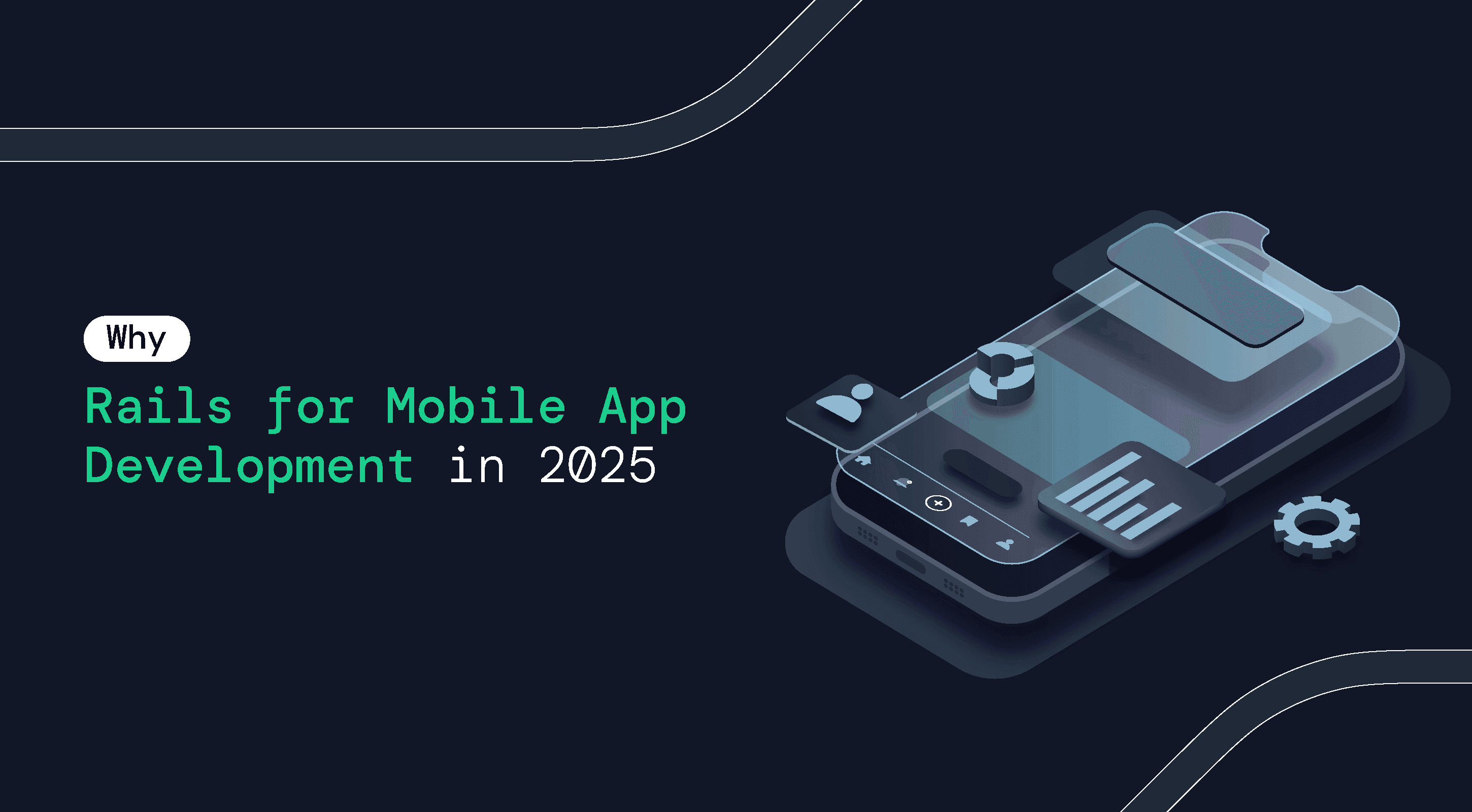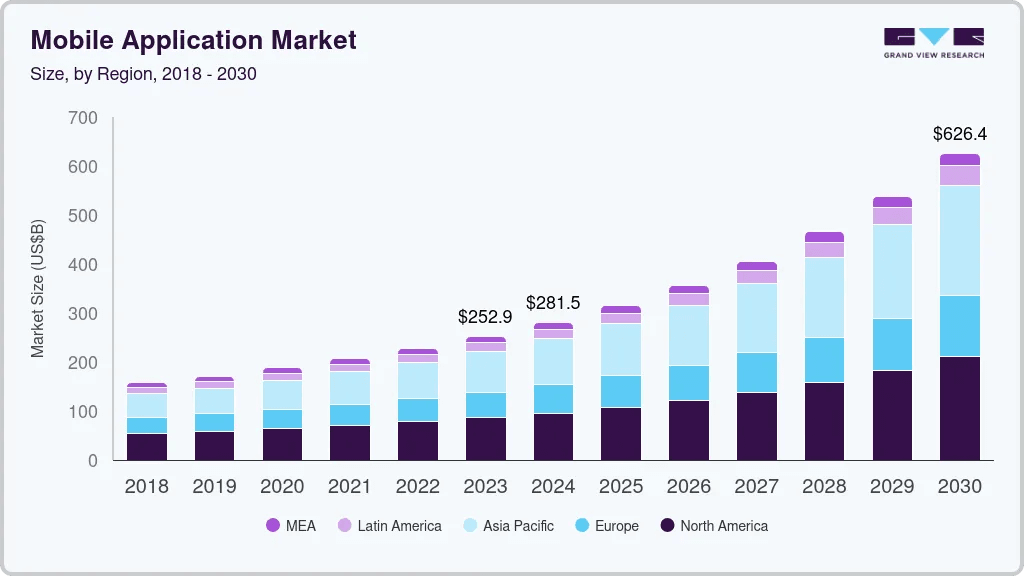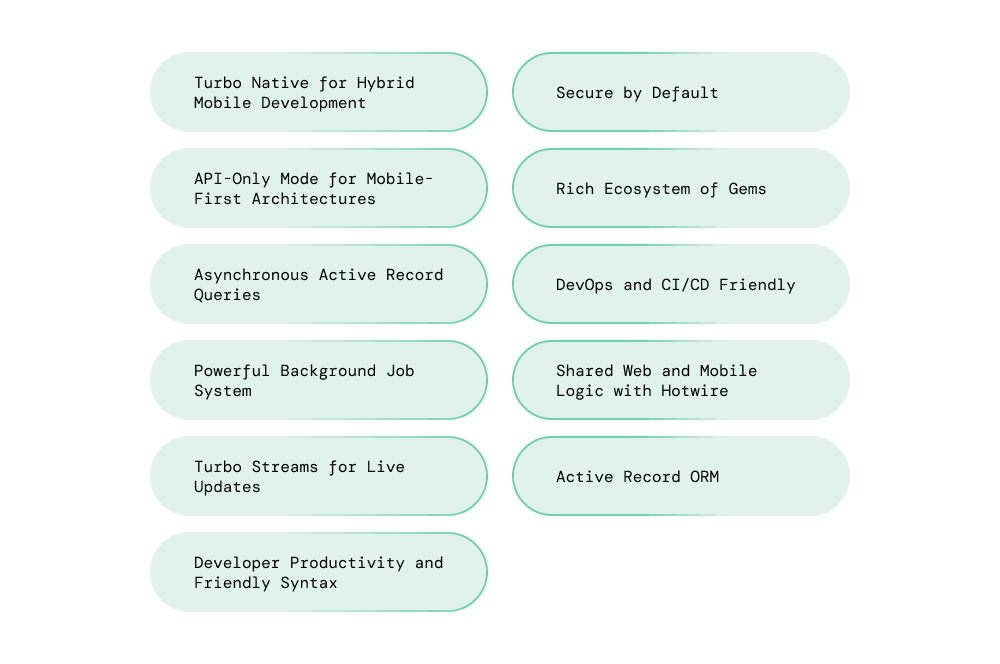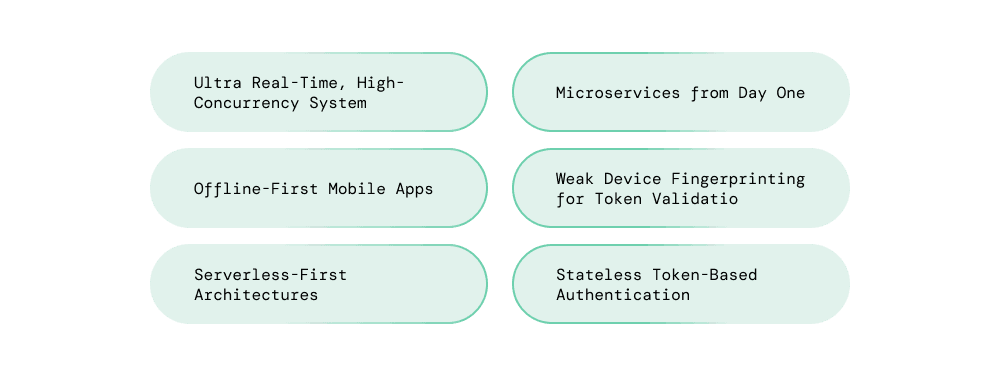Why Ruby on Rails Is Still a Smart Choice for Mobile App Development in 2025
Find out why Ruby on Rails mobile development remains popular and discover the benefits of RoR development for modern projects.

Pichandal
Technical Content Writer

With mobile usage continuing to surge in recent years, businesses are increasingly launching mobile apps to serve customers, partners, and employees more effectively. From consumer-facing apps to internal tools, the demand for robust, scalable backends has never been higher.
According to Grand View Research, the U.S. mobile application market is projected to grow at a CAGR of 14.1% from 2024 to 2030, signaling strong momentum across industries.
Many teams are now exploring Ruby on Rails mobile app development as a practical way to build fast, scalable backends. Known for its rapid development capabilities and mature ecosystem, Rails has quietly become a strong contender in the mobile space. With tools like Turbo Native, API-only mode, and seamless background processing, Rails makes mobile app development more productive than ever.
In this article, we’ll look at why Rails remains a smart backend choice for mobile apps today, what to know about Rails for Ruby mobile app development, and where it may not be the best fit.

Why Choose Ruby on Rails for Mobile App Development?
Although Rails was built for the web, in 2025 it’s driving mobile apps with greater efficiency than ever, especially when used in modern hybrid and API-driven architectures. That’s why developers continue to choose Ruby on Rails mobile development.
Here are the top reasons our expert developers at RailsFactory believe Ruby on Rails development remains the top choice for building robust, scalable mobile applications:

1. Turbo Native for Hybrid Mobile Development
Turbo Native allows developers to build hybrid mobile apps using native navigation alongside HTML-powered screens served by the Rails backend. This approach cuts development time and reduces costs by reusing backend logic across platforms.
2. API-Only Mode for Mobile-First Architectures
Rails 8 introduces improvements to API-only mode, making it lighter and faster. It is well suited for building scalable RESTful or GraphQL APIs that serve mobile apps built with React Native, Flutter, or native Android and iOS frameworks.
3. Asynchronous Active Record Queries
Rails now supports non-blocking database queries with .load_async, helping backend systems handle more requests without delay. With which, mobile apps benefit from faster data access, especially in high-concurrency environments.
4. Powerful Background Job System
With ActiveJob and Sidekiq, Rails efficiently handles background tasks like sending push notifications, syncing data, or delivering transactional emails. By offloading heavy operations, it keeps mobile apps fast and responsive, making Rails a solid choice for powering mobile experiences behind the scenes.
5. Turbo Streams for Live Updates
Turbo Streams, powered by WebSockets, enable real-time UI updates from the server. This makes it easy to implement mobile features like live chat, presence indicators, or instant alerts, without relying on complex third-party services.
6. Developer Productivity and Friendly Syntax
Ruby’s clean and expressive syntax, along with Rails’ opinionated structure, helps developers immensely to build features faster and with fewer bugs. It also makes it easier to get new team members up to speed, which keeps projects moving without unnecessary friction.
7. Secure by Default
As Rails includes essential security features out of the box such as CSRF protection, strong password encryption, and parameter sanitization, it helps ensure your mobile APIs are secure from the start.
8. Rich Ecosystem of Gems
Rails offers a mature ecosystem of libraries that cover a wide range of needs. Popular gems like Devise, Stripe, and Twilio integrate smoothly into mobile projects, reducing the need to build common features from scratch.
9. DevOps and CI/CD Friendly
Rails works well with modern deployment platforms such as Heroku, Render, and Fly.io. It also integrates smoothly with tools like Docker, GitHub Actions, and remote development environments. That flexibility makes it easy to build, ship, and scale mobile backends without extra complexity.
10. Shared Web and Mobile Logic with Hotwire
Hotwire allows developers to use the same backend views for both web and Turbo Native mobile apps. This approach simplifies code management and accelerates delivery across platforms.
11. Active Record ORM
Rails’ built-in ORM, Active Record, makes working with databases easier and less error-prone. It helps handle common mobile backend needs like user management, data syncing, and offline support logic.
Key Things to Know About Rails for Ruby Mobile App Development
Rails and Ruby have long been trusted duo for building scalable web apps. But their combination extends beyond the browser, making Ruby mobile app development faster and more efficient. Here’s why Rails is a strong choice for powering your mobile app projects.
1. Mobile App Type: Native, Hybrid, or API-Only
Rails adapts well to different mobile architectures. It works especially well as a backend for API-only or hybrid apps using Turbo Native. However, if you're building a frontend-heavy native app, Rails is best used purely as an API layer that handles business logic, data, and integrations.
2. Team Experience with Ruby on Rails
Rails is beginner-friendly, but productivity depends on your team's familiarity. If your team already has hands-on experience on the framework, you can build faster. If not, expect some initial ramp-up despite the friendly learning curve.
3. Real-Time or Near Real-Time Needs
Turbo Streams provide real-time updates for most use cases, such as chat or activity feeds. However, if your app demands ultra-low latency and high concurrency (like multiplayer games), you’ll need to evaluate additional infrastructure.
4. API Performance Optimization
Rails 8 has various performance improvements, but fast mobile experiences also depend on smart caching, efficient queries, and pagination. Thus, plan to fine-tune performance if your app is API-intensive.
5. Turbo Native Learning Curve
Turbo Native enables powerful hybrid app development but requires your team to be comfortable with server-rendered HTML and how it interacts with native mobile SDKs. Be prepared for some onboarding time if you're new to this approach.
6. Scalability and Architecture Planning
Rails apps can scale well with the right setup. If you expect rapid growth, plan early for horizontal scaling, background jobs, and distributed caching to avoid bottlenecks later.
7. 3rd-Party Service Integrations
From Stripe to Twilio and Firebase, Rails makes external API integrations smooth using Faraday or HTTP gems. But, you need to ensure robust error handling and retry mechanisms for production-readiness.
8. Project Complexity and Fit
Rails excels at building MVPs, CRUD-heavy apps, and mid-sized platforms quickly. For highly complex, real-time applications or systems with intensive concurrent processing, additional architectural planning may be needed.
When Rails Isn’t the Right Fit (and Why)
Ruby on Rails is a proven, mature framework that powers thousands of web and mobile backends, making it a popular choice for Ruby on Rails mobile app development. It excels at rapid development, clean API design, and hybrid app support through Turbo Native.
That said, Ruby mobile app development today spans a wide range of architecture and performance needs. In some cases, particularly those involving real-time interactions, deep offline capabilities, or serverless infrastructure, Rails may not be the most natural fit.
Here are few scenarios we believe where Rails may fall short for mobile app development, and you might consider alternatives:

1. Ultra Real-Time, High-Concurrency Systems
Rails uses a thread-based concurrency model, which isn't ideal for handling massive volumes of simultaneous WebSocket connections or real-time data streams. For mobile apps that demand instant responsiveness like multiplayer games, live auctions or stock trading dashboards, Rails can hit performance ceilings without significant infrastructure support.
Event-driven frameworks like Elixir’s Phoenix (with BEAM VM), Go, or Node.js are better optimized for these workloads and scale more naturally under heavy concurrency.
2. Offline-First Mobile Apps
If your mobile app must function seamlessly without internet, Rails isn’t the most natural fit. It doesn’t offer built-in support for local first-first storage or conflict resolution. Hence, syncing data between offline devices and the server requires custom logic. While achievable, it adds significant complexity and demands careful coordination.
3. Serverless-First Architectures
While Rails can technically run on AWS Lambda (using Lamby), it’s not optimized for cold starts or serverless patterns out of the box. Thus, Lightweight and stateless APIs built with frameworks like FastAPI, Go, or Node.js are usually a better fit in serverless environments.
4. Microservices from Day One
Rails shines as a monolith-first framework, ideal for building end-to-end apps quickly. But if your architecture is microservice-based from the start, Rails can feel heavy. And managing multiple Rails services adds overhead and complexity. For these kind of needs, lightweight frameworks like FastAPI, Spring Boot, or Node.js often suit better.
5. Weak Device Fingerprinting for Token Validation
By default, Rails doesn't tie tokens to specific devices. Secure biometric flows often require storing device identifiers or fingerprints for proper validation. Without it, tokens can be reused across devices, increasing the risk of impersonation.
6. Stateless Token-Based Authentication
Rails was built for session-based web applications, where the server maintains user state. In contrast, mobile apps typically require stateless, token-based authentication using standards like JWT or OAuth2, especially for scalability across devices.
While gems like devise-jwt and doorkeeper help enable these flows in Rails, you’ll need to handle refresh logic, token revocation, and rotation manually, which in turn adds complexity and risk.
Wrap up
Mobile app development is a fast-moving space, and choosing the right backend framework depends on your goals, resources, and the kind of experience you want to deliver. Ruby mobile app development continues to be a dependable option for many teams, especially when building API-driven or hybrid mobile apps with a focus on rapid development and maintainability.
While it may not be the best fit for every edge case, Rails remains a strong contender for a wide range of mobile app backends in 2025. The key is to evaluate your app’s unique needs and pick the stack that sets your team up for long-term success.
If you’re evaluating Rails for your next mobile app or need help navigating technical decisions, feel free to reach out to us at RailsFactory. We're always happy to support you!



